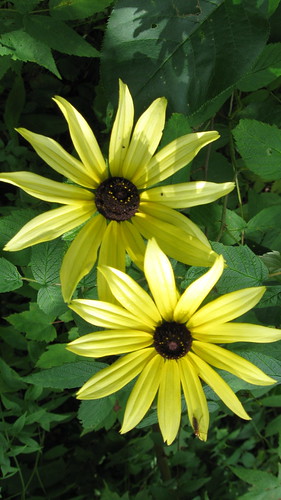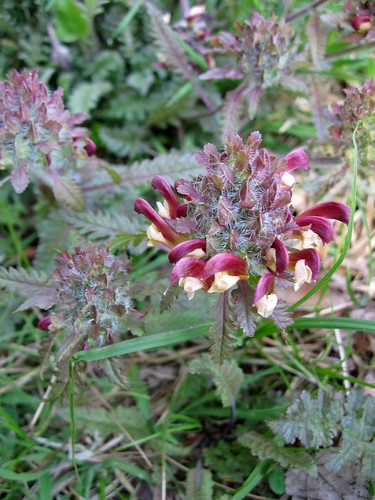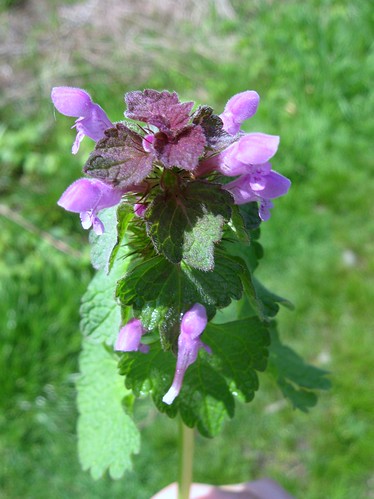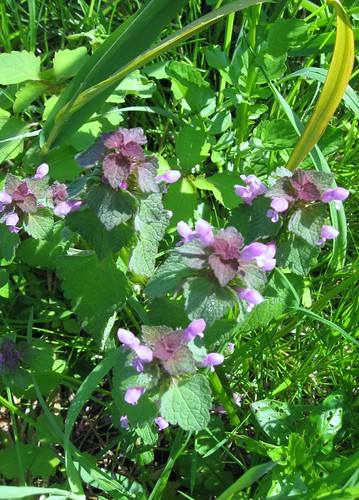Tuesday, May 10, 2011
Monday, May 9, 2011
Common Lousewort
Herb: Common Lousewort
Latin name: Pedicularis canadensis
Other Names: Betony, Canadian Lousewort, Lousewort, Wood Betony, American Lousewort
Family: Scrophulariaceae (Figwort Family)
Habitat:Perennial herb, native to eastern North America from Nova Scotia to Manitoba, south to northern Mexico and east to Florida. Growing in moist open woods, thickets, along roadsides and clearings. Cultivation: Wood Betony is a member of the figwort family (Scrophulariaceae), difficult to cultivate, some reports say that it is a semi- parisic plant. It requires a moist well-drained soil and a partially shaded to sunny area. A low growing hairy plant 5 to 14 inches tall with up to five erect unbranched stems in a clump. A broad whorl of tubular, hooded flowers tops each stem, 10-20 flowers form a cluster. Flowers are about an inch long, may be pale yellow, yellow, red, or even a mixture of the two. Leaves are soft and hairy, alternate, mostly basal, and from 3 to 5 inches long. Leaf blades are fern-like and pinnately dissected, often tinted red. Upper leaves are about an inch long. Gather entire plant, as flowers bloom, dry for later herb use.
Medicinal Use:It is an astringent herb known for its abilities as a nervine, sedative, hypnotic and skeletal muscle anti-spasmodic. The active constituents in the plant are betaine, betulinic-acid, caffeic-acid, chlorogenic-acid, harpagide, rosmarinic-acid, and tannin. As an alternative medicine it is an emmenagogue , anodyne, anti-tumor, aphrodisiac, blood tonic, cardiac, poultice, stomachic. The roots are blood tonic, cardiac and stomachic. Infusion used to treat headaches, dizziness, urinary, bladder and kidney pain. Also used in the treatment of stomach aches, ulcers, diarrhea, anaemia and heart troubles. A poultice of the root is applied to swellings, sore muscles, varicous veins, and tumors. The finely grated roots can be added to food as an aphrodisiac. An infusion of the leaves has been used to procure an abortion. An infusion of the fresh or dried leaves has been used to treat a sore throat. As a tincture it is used for a muscle relaxant for the upper shoulders and neck. A mild calming sedative. A skeletal muscle relaxant formula of Pedicularis in combination with Skullcap and Black Cohosh will relieve muscle tension specific to the upper and lower back, but will not relieve any pain associated with tension. A wash or dip in a strong decoction is used to rid animals and people of lice and scabies.
Historical Lore:Native Americans ate the leaves collected early in the season in soup or as a green like spinach and put the chopped root into the food they gave to their pony to fatten it and make it vicious to all but it's owner. They considered the root a love charm. Sometimes young men would carry the root when they intended to make advances on a potential lover. It was secretly, perhaps maliciously, put in the food of an intended as a aphrodisiac. Another, less evil use was to bring estranged couples back together by placing it in a dish they were going to eat in common.
Sunday, May 8, 2011
Purple Dead Nettle
Scientific name:
Lamium purpureum
Description:Purple Dead Nettle is a member of the mint family it has a square stem, no basal leaves and the lower leaves are dark green and have short petioles, all leaves are hairy, and are circular in outline with 'scalloped' margins, becoming more purple-red and smaller in the upper leaves. The flowers grow in whorls of 3-6 in the upper leaves. Purple-red in color the flowers are tubular blooming year round. Purple Dead Nettle is a favorite for bees and butterflies, who find abundance of honey in its blossoms. When poulitced it smells like freshly husked corn.
Habitat:
An annual herb believed to be a native of Europe, now found world-wide and growing in most any situation or soil, mainly in the temperate regions.
Medicinal/Edible:The leaves and flowers can be cooked or added raw to salads & smoothies. The plant is very nutritious, high in iron, vitamins and fiber. The whole plant is medicinal, used as an astringent, diaphoretic, diuretic, and tonic.
The entire plant is astringent, and a decoction of the plant is useful for stopping & checking of any type of hemorrage. The fresh bruised leaves can be poulticed to any external cut or wound. The dried plant, made into a tea with honey, encourages perspiration & acts on the kidneys, being useful in cases of chill.
Subscribe to:
Comments (Atom)





